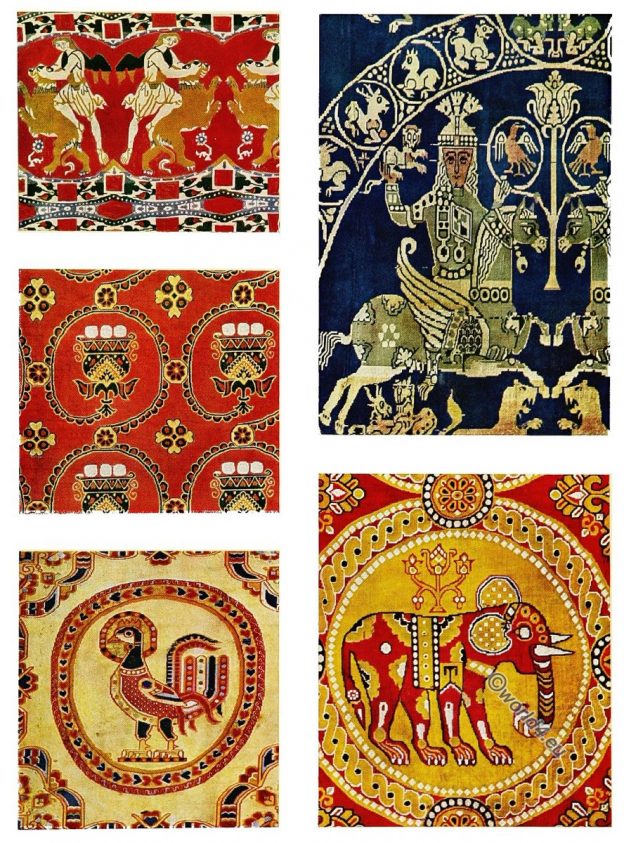The Doge of Venice from the 9th to the 16th century. State regalia. Officials. Jewish merchant of the 14th century.
Category: 9th Century
The dress and decorations of the Anglo-Saxons. 8th to 11th century
The dress of the Anglo-Saxons. 8th to 11th century
Antique Fabrics from Egypt. Coptic Silks. Silks from Alexandria.
Antique Fabrics. Red silk, patterned with figures of Samson and the Lion. Fabric with elephant pattern. Fabric with cock pattern, Persia.
Illustrations of Prudentius. Anglo-Saxon civil and military costume.
Prudentius is the most important Christian poet of late antiquity. Prudentius was very popular in the Middle Ages. There are more than 300 manuscripts, the oldest one from the 6th century.
The Anglo-Saxon fashion and costume history. England c. 460 to 1066.
The Saxons commenced their conquests during the fifth century, but it was not until the year 720 that the earliest MS. preserved to us saw the light.
Britannia Saxonica. Chronology of the Anglo-Saxons.
The Saxon Heptarchy in England. A map of Britain during the Saxon octarchy. ARMS OF THE ANGLO-SAXON KINGS.
Carolingian 768 – 814. The Frankish power.
The Frankish power. The Byzantine Empire. The Scandinavian kingdoms. The Norwegian coast-lands. The Caliphate of the Omayads.
Medieval Earl in armor leaving for the war.
Medieval Earl in armor leaving for the war, followed by his vassals. 8th, 9th century. Comte partant pour la Guerre, suive de ses Vassaux From the book: Costumes civils et militaires… Read More
Charles the Fat encamped under the walls of Paris
Charles the Fat, Charles III, Carolingian Emperor encamped under the walls of Paris without daring to fight the Normans.
Paris, Norman viking invasion in 845.
Siege and attack on Paris by Vikings. Invasion des Normands en 845.










